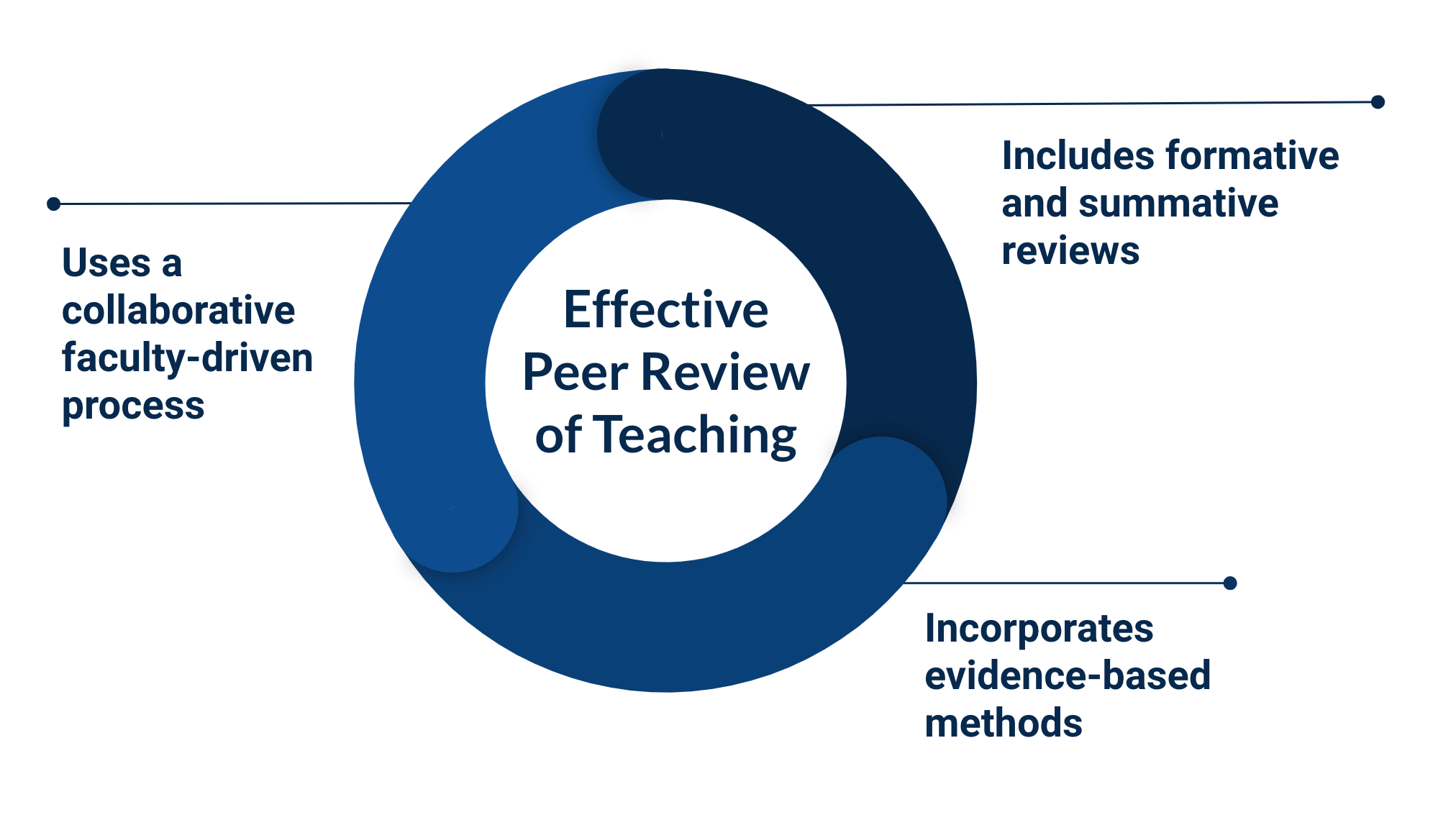
Peer Review of Teaching
What is peer review of teaching (PRT)?
Peer review is recognized in academia as a measure for ensuring quality work that meets standards and expectations among experts. Similarly, peer review of teaching is an effective strategy to improve teaching and student learning. The peer review process offers faculty an opportunity to reflect on teaching skills and learn from one another.
Peer review of teaching typically includes teaching observations, also known as classroom observations, where a colleague or academic leader observes an instructor teaching in a classroom or another learning environment. However, peer review of teaching is not limited to observations and may include gathering and analyzing qualitative and quantitative data through a colleague’s review of other elements of teaching.
Peer review of teaching may include a review of:
- teaching materials (e.g. syllabi, lesson plans, assignments)
- student artifacts (e.g. examples of student work, letters from former students, student evaluations of teaching)
- self-evaluative statements (e.g. self-assessments, teaching philosophies, annotated teaching materials)
- classroom observations
- learning management system course shell (e.g. Blackboard course)
- a teaching portfolio
...peer review is a way of making teaching public, enhancing the value of teaching and engaging peers in scholarly examination of their profession. (Chism, 2007)
What are the benefits of PRT?
Research has shown a number of benefits to both faculty reviewers and reviewees.
Faculty reviewers benefit by:
- reflecting on qualities of effective teaching (Bell & Mladenovic, 2008; Hendry & Oliver, 2012)
- learning new teaching strategies (Bell & Mladenovic, 2008)
- increasing confidence and incorporating new teaching strategies (Hendry & Oliver, 2012)
- sharing useful tips with colleagues (Bell & Mladenovic, 2008; DiVall et al. 2012)
Faculty reviewees benefit by:
- reflecting on qualities of effective teaching (Hendry & Oliver, 2012; Swinglehurst et al., 2008)
- recognizing areas of strength and weakness in their teaching (Al Qahatani et al., 2011)
- receiving feedback beyond Student Evaluations of Teaching (SETs) (Berk et al., 2004)
- gaining perspectives on teaching from a colleague (Berk et al., 2004)

What makes PRT most effective?
Effective peer review is a collaborative process. There is value in being reviewed as much as there is in providing feedback. A successful peer review process involves meaningful conversations between teaching practitioners, focused on celebrating strengths, identifying goals for improvement or refinement, and exchanging ideas and practices.
A formal peer review of teaching process takes careful consideration to use meaningful, evidence-based practices that avoid pitfalls like providing superficial or one-dimensional feedback.
Peer review of teaching can be provided for both formative or summative purposes. Literature suggests that the most effective PRT includes opportunities for both formative and summative review.